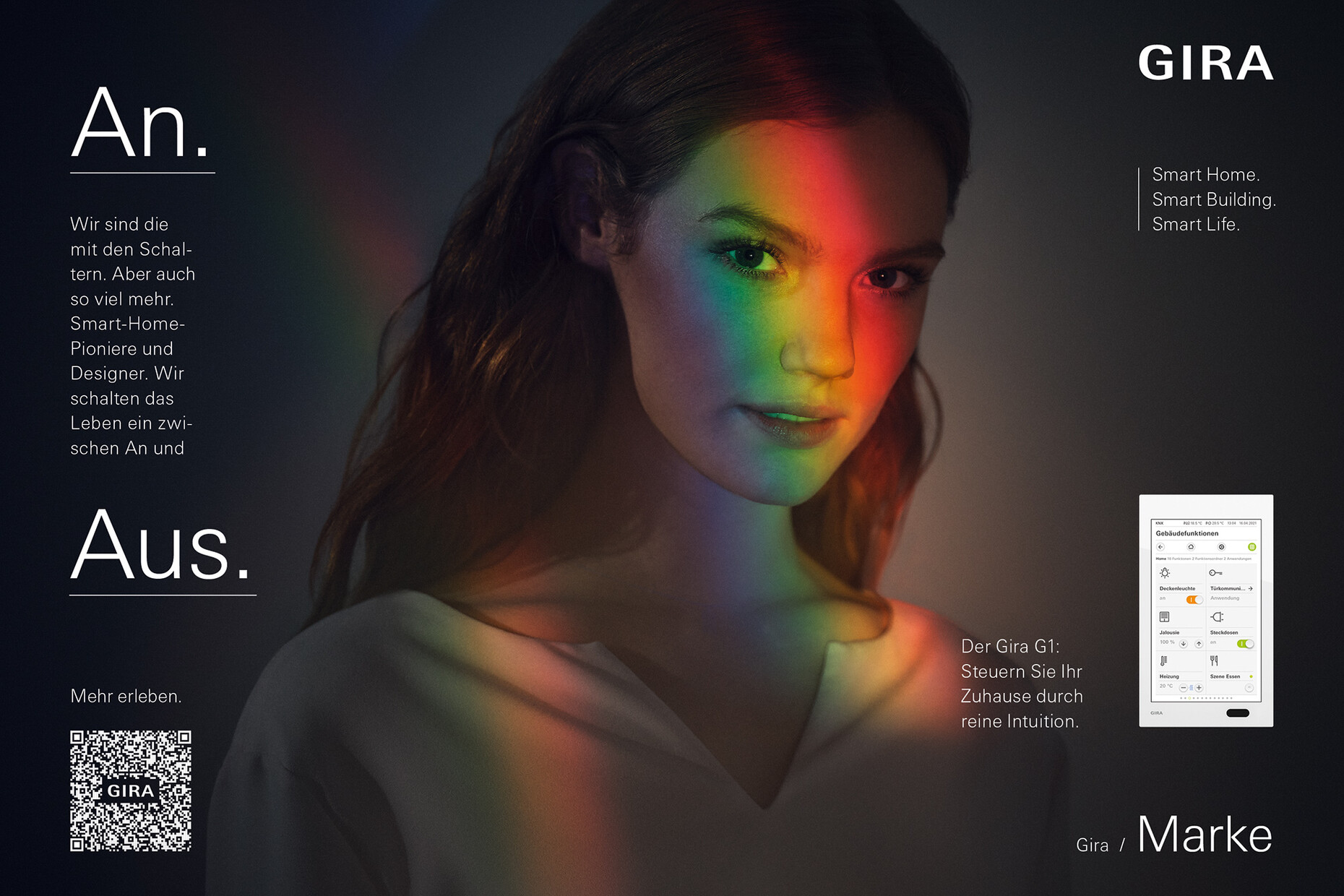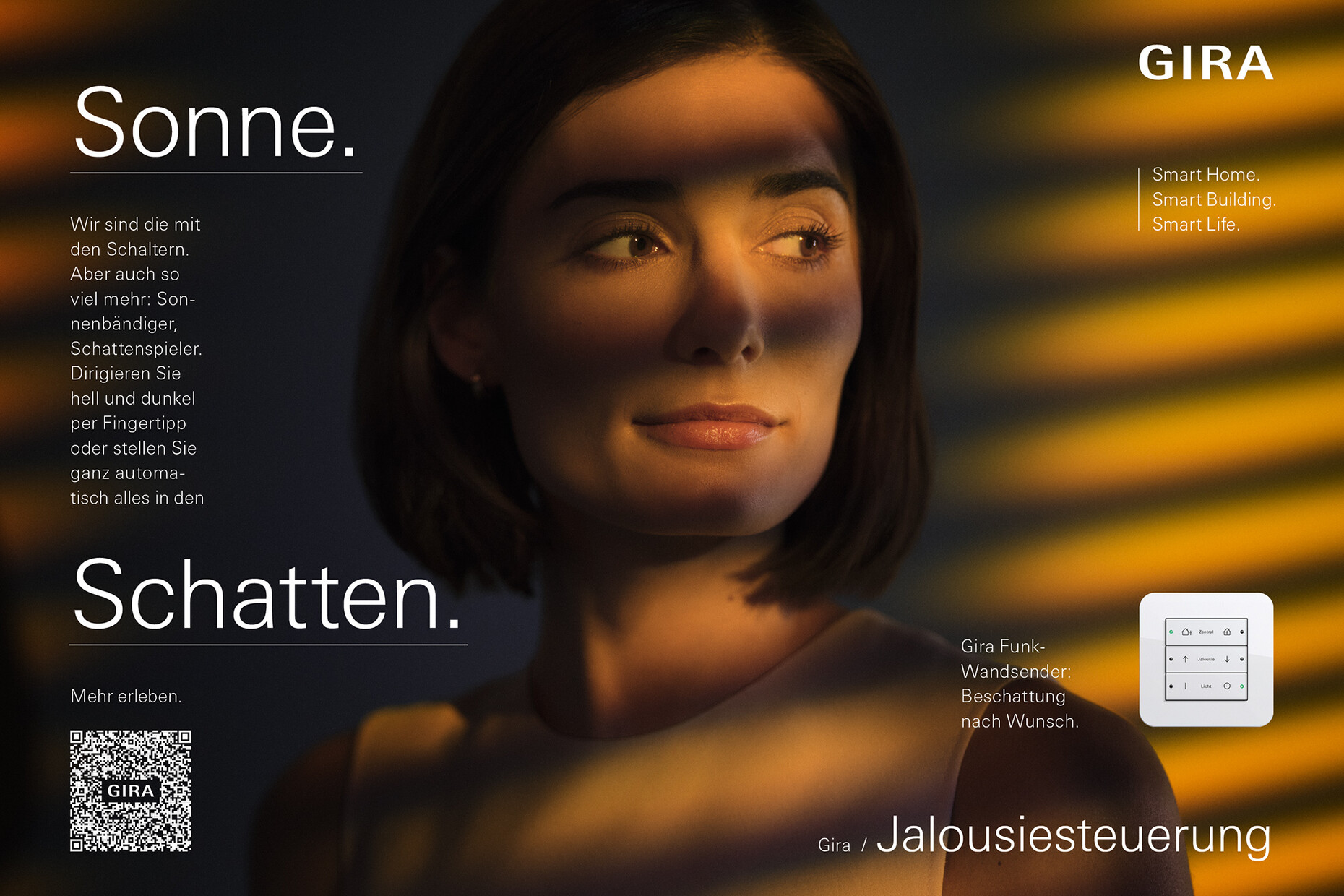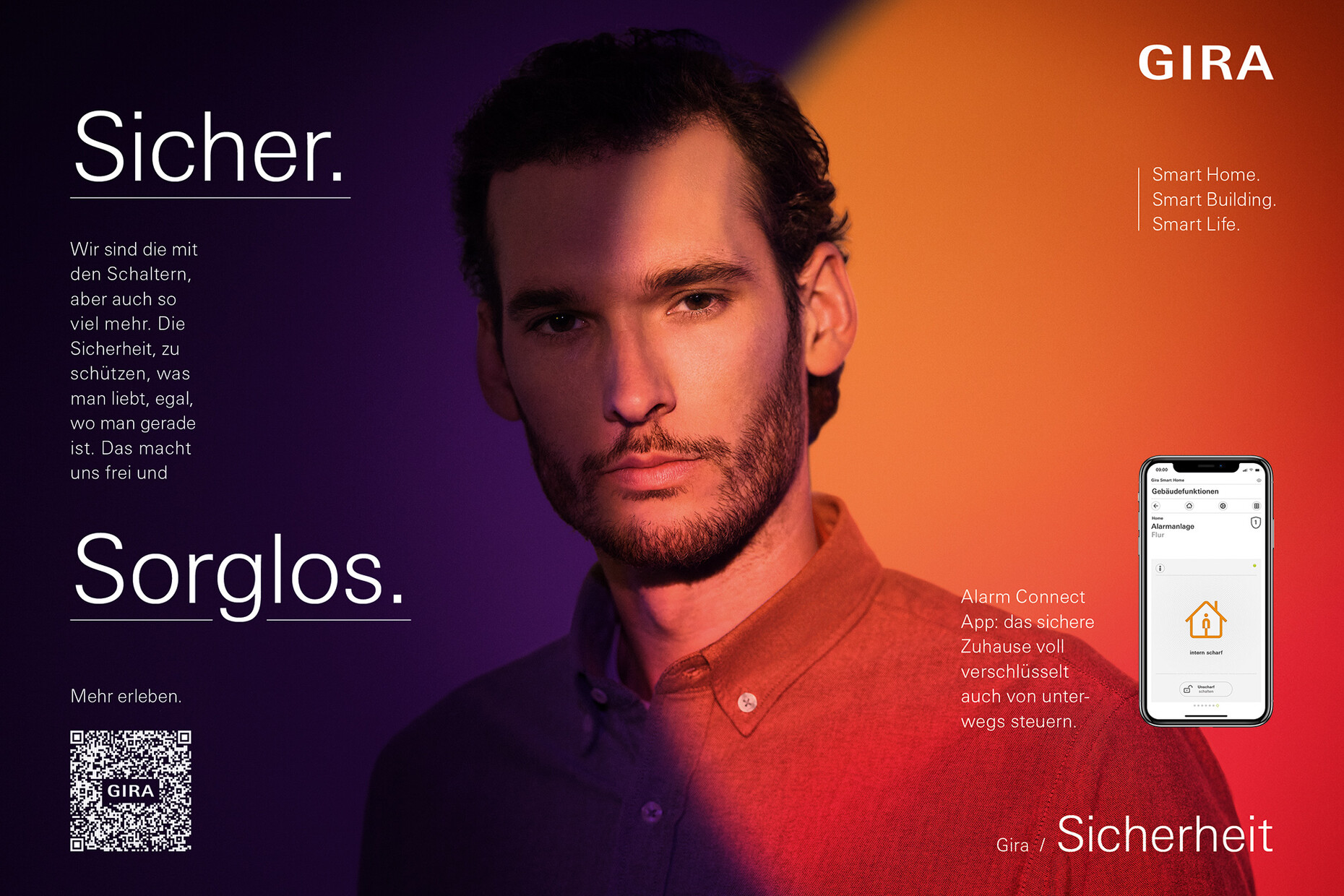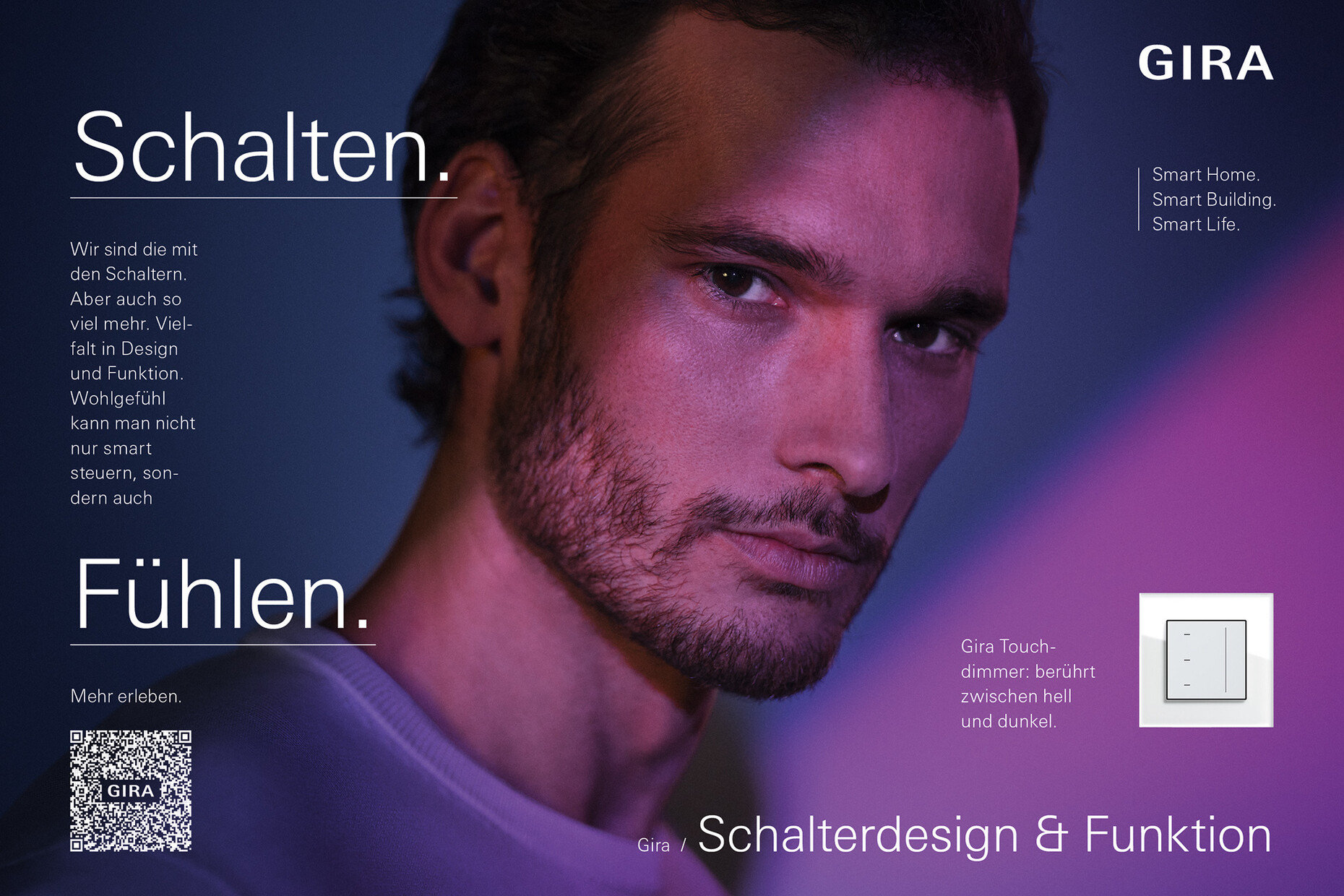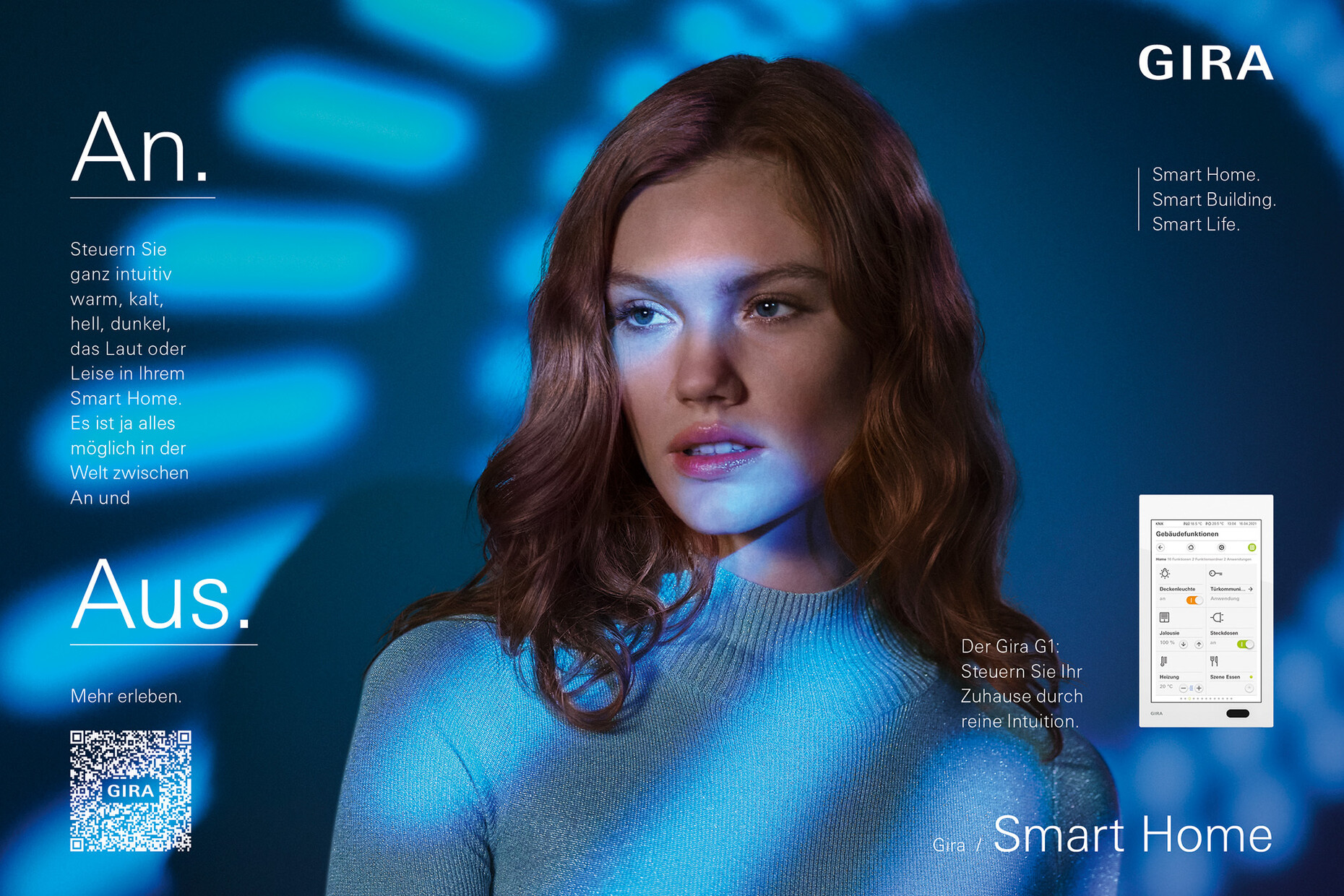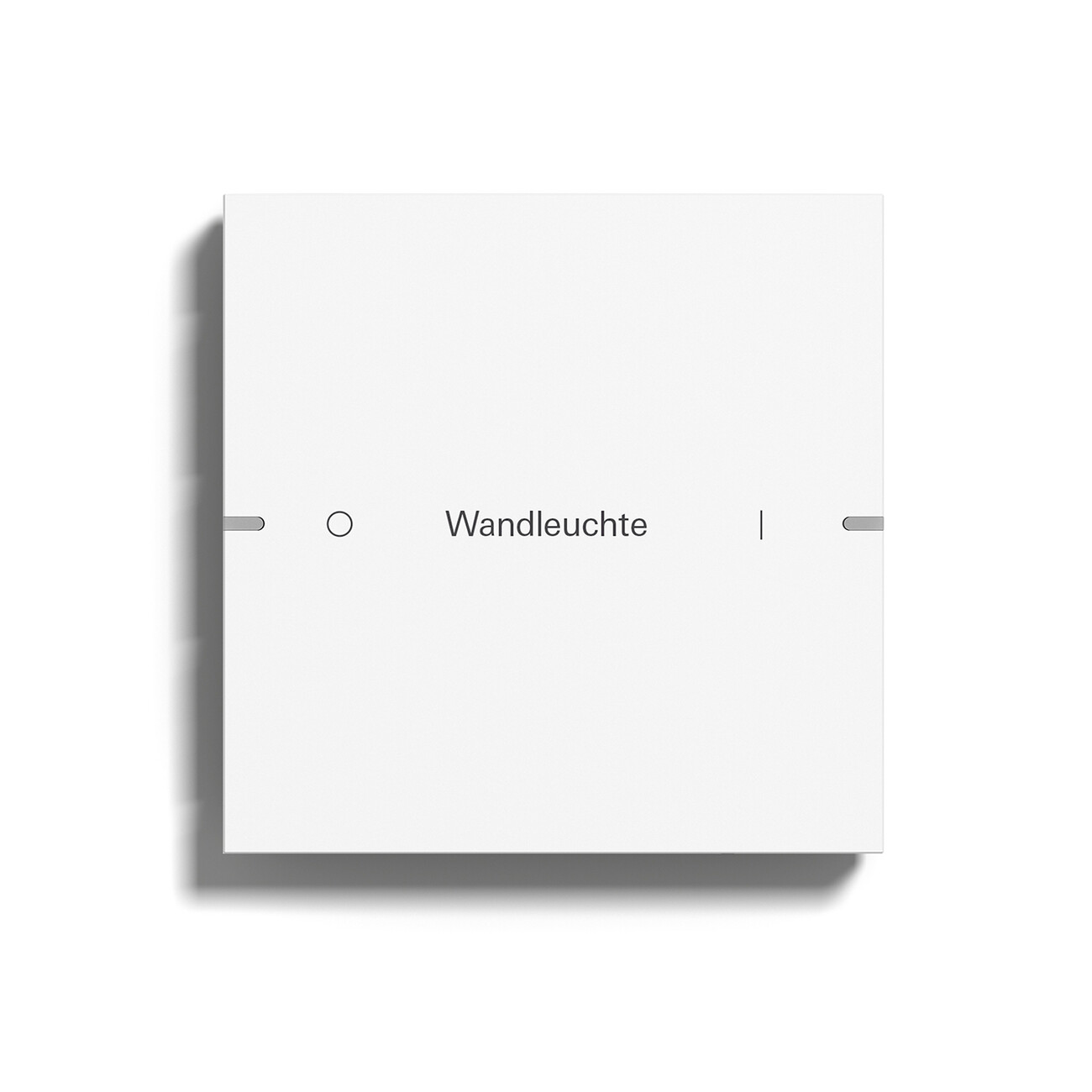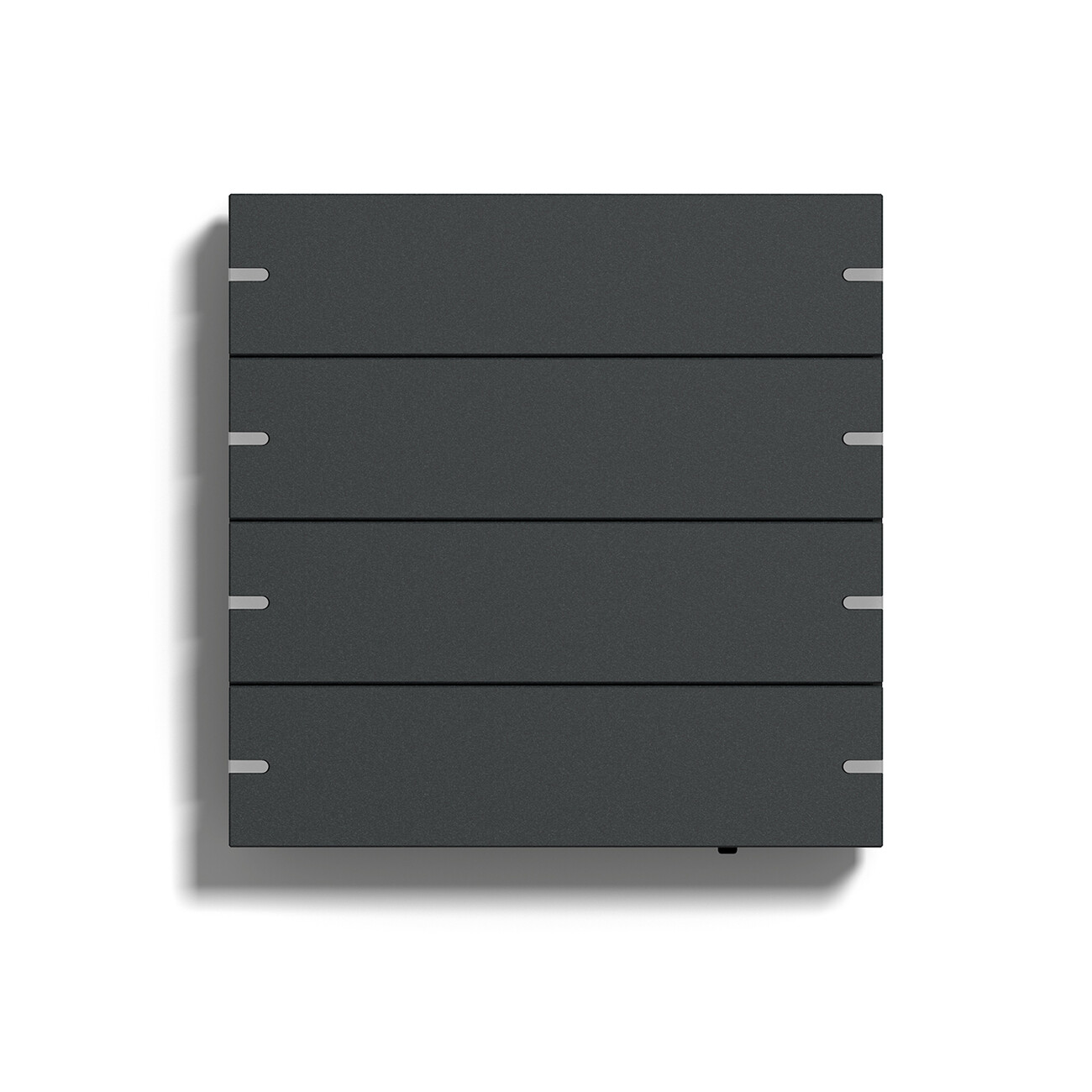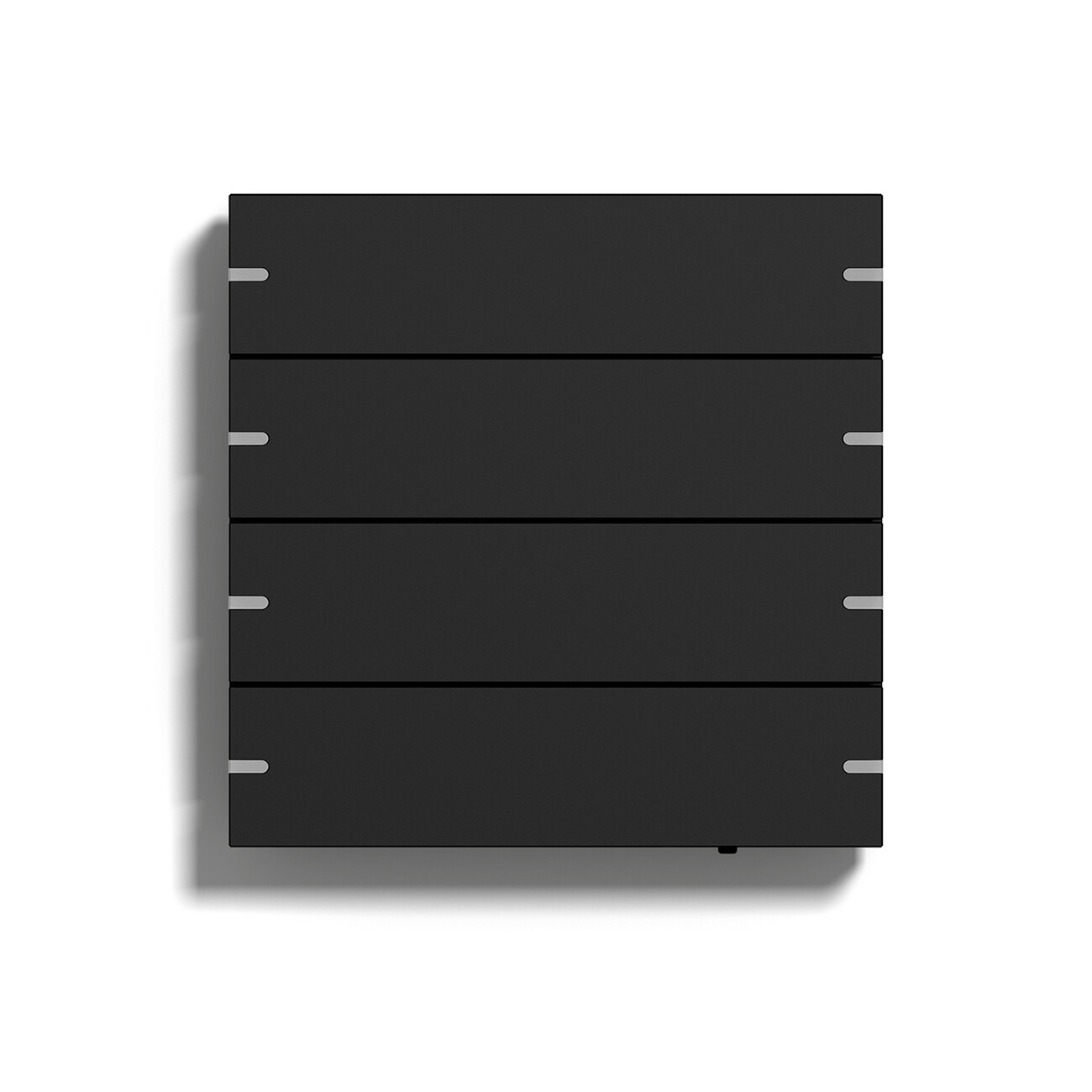More than switches
Gira was founded in Germany in 1905 and is considered one of the leading full-service providers offering intelligent end-to-end solutions for networked digital and electrotechnical building automation and control. The products on offer from the company include switches and sockets, plus – as is stated in the company’s self-image statement – "so much more, too": A wide range of electrical installation systems for, amongst other things, communications technology, door entry systems and the digital control of heating, lighting, blinds and other forms of home automation. Particularly with their intelligently networked smart building systems, the company based in Radevormwald in North Rhine Westphalia has been working at the cutting edge of technology since the 1990s. Gira’s products are in use in such places as Hamburg’s Elbphilharmonie and the Design Museum in London.
Alexander Russ: For a considerable time now, digitization has meant that the home and building automation sector is in the throes of fundamental transformation. How do such things impact a company such as Gira?
Julian Waning: The demand for smart building technology is growing constantly in the private housing construction sector – however, not to the extent expected even a few years ago. Gira therefore believes in the coexistence of digital and analog technologies. From this viewpoint, smart technology really does not have to equate to digitization. The "Gira KNX sensor", for examples, looks like a normal light switch. Nevertheless, it is part of a smart system. And there are many different options in terms of the design of smart technologies and the form that their implementation can take.
Gira is one of the pioneers of smart building technology, for instance, with its Gira HomeServer. However, nowadays technical developments in the smart home sector are being driven by large corporations such as Google and Apple. How can an SME such as Gira position itself as an ideas generator in such a setting?
Julian Waning: Through its quality. Gira’s products are "made in Germany". Our manufacturing site is in Radevormwald, in North-Rhine Westphalia, and it is also from there that we mastermind our entire operations. However, for us "made in Germany" is not only the designation of where our products come from. Instead, it is, more than anything else, the expression of our quality standards – standards that we invest a great deal of time and money in meeting. To mention one example, at our testing laboratories a switch has to pass various different tests – some of them under extreme conditions such as changes in temperature ranging from arctic cold to the heat of the desert. In addition to this, our products must work reliably, as well as having a good feel to them. When people have a Gira switch in their hands they can even feel that thanks to its texture.
How important is your products’ design?
Julian Waning: Gira’s approach to design is a holistic one. This also sets us apart from many of our competitors. We market integrated design lines – from door-based communication systems to various smart home switch panels and even the prosaic socket outlet. In other words, all these products match one another beautifully in terms of their stylistic vocabulary. This is another reason why Gira describes itself as a system provider.
Your "Gira Pushbutton sensor 4" is a good example of the interplay between digital technology and design. The pushbutton now also comes in new colors and finishes. Can you tell us more about the product?
Julian Waning: The "Gira Pushbutton sensor 4" is a multifunctional pushbutton for the smart home and up to eight customized functions can be defined for it. Its frameless design fills a functional gap in the range. The good thing about its design is that users can even operate it with their elbows, for instance, when they have their hands full. That kind of thing would not work with a touchscreen. Moreover, it boasts a top-class finish that is 3 mm in thickness, available in glass, stainless steel and aluminum. The stainless-steel version also comes in a bronze finish and the aluminum switch boasts a lacquered finish.
You have come up with a new image campaign, together with Düsseldorf-based agency "thjnk". Among other things, this campaign highlights Gira’s expertise in the fields of digital technology and design. What is that all about?
Julian Waning: In the past, Gira just listed its products and this had a very businesslike feel to it. It sought to reach mainly tradesmen and planners. What is different about the current image campaign is that it appeals primarily to the end user. This goes a long way to explaining our new claim – "We are the people for switches – but so much more besides". This is why the new campaign appeals to the emotions to such an extent. The focus is not on the technology but on the people for whom we are coming up with solutions, solutions that make their lives a bit easier, simpler and safer. We have consciously stressed the combination of engineering skills and an appeal to the consumer’s heart and soul. Furthermore, the way the campaign makes use not only of spectral colors but also of the play of light and shade is highly atmospheric. This also explains why it goes down so well with tradesmen and planners.
What is the thinking behind this new focus on end consumers?
Julian Waning: End consumers can get a better handle on our products and solutions if they start to develop a consciousness of the Gira brand and its values. This also impacts the decision process for construction projects. Clients thus suddenly realize they are choosing a product that is "made in Germany", one that will live up to the associated quality standards in the context of daily use and will give him a good feeling, one that goes far beyond the mere "off" and "on" functions for a switch.


